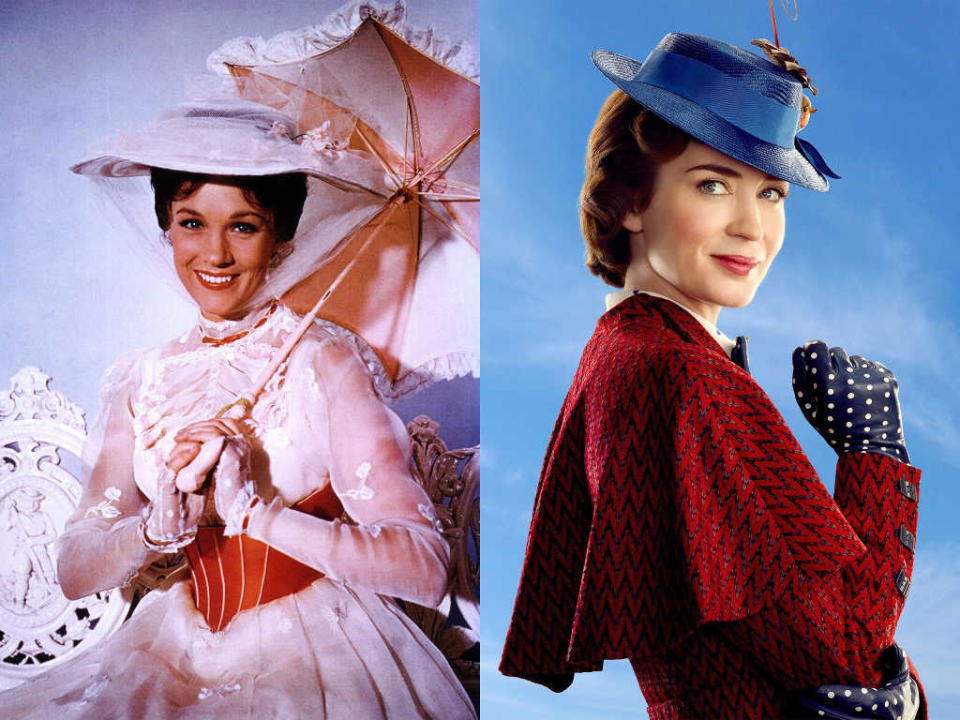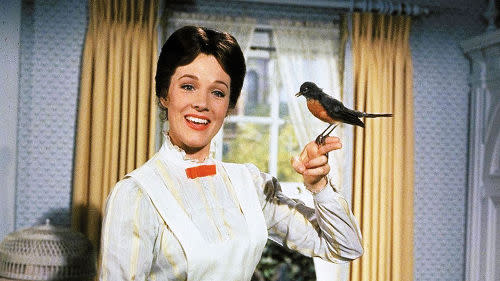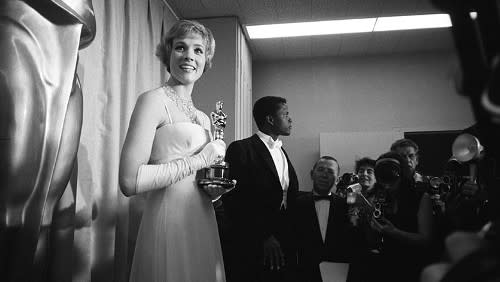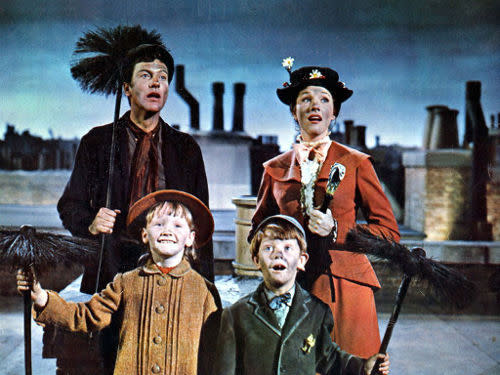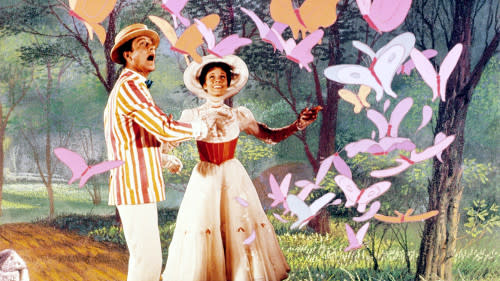Looking back at the original "Mary Poppins" movie

|
This December, we will witness the return of the beloved magical nanny in cinemas after - get this - 54 years of absence.
That magical nanny in question is none other than the titular character in "Mary Poppins Returns", where Emily Blunt now takes over the iconic role previously played by Julie Andrews in the original 1964 version.
As we await the impending release of the long-awaited sequel this Christmas Eve, let's take a look back at the original "Mary Poppins".
Who could have forgotten the tongue-twisting, yet catchy sing-a-long "Supercalifragilisticexpialidocious" song? Or the wonderful "A Spoonful of Sugar" that rhymes as it goes; "just a spoonful of sugar helps the medicine go down"?

|
These are some of the memorable songs that defined the older generation's childhood who grew up watching the original "Mary Poppins". Released during the height of Hollywood movie musicals of the 50s and 60s era, "Mary Poppins" joined the ranks of the all-time greats alongside "An American In Paris" (1951), "Singin' In The Rain" (1952), "The King And I" (1956), "West Side Story" (1961), "My Fair Lady" (1964) and "The Sound Of Music" (1965).
Based on P.L. Travers' children's' books of the same name, the story behind "Mary Poppins" is simple enough. It is basically about the titular character played by then-young Julie Andrews, who descended from the sky with an umbrella and shows up at Banks' house at Edwardian London's Cherry Tree Lane. She subsequently takes on the job as a nanny and looks after the two children, Jane (Karen Dotrice) and Michael (Matthew Garber) as their parents (David Tomlinson, Glynis Johns) are too preoccupied with their own problems. Soon, Mary helps the two children by expanding their imaginations through a series of fantastical journey filled with music, joy and laughter.

|
"Mary Poppins" was a groundbreaking achievement at the time of its release, particularly for Walt Disney Productions. The acclaimed musical was a huge hit at the box office and even earned a whopping 13 Academy Awards nominations including Best Picture (lost to George Cukor's "My Fair Lady") and Best Director for Robert Stevenson. "Mary Poppins" took home five Oscars and one of them happened to be a memorable Best Actress win for Julie Andrews, given the fact this was actually her feature-length acting debut.
In fact, you could say it was Julie Andrews that contributed most of the movie's enduring success. And frankly, it's easy to see why: She is both charming and delightful while carrying her then-first lead role well enough on her own. She practically stole every scene throughout the movie that her co-stars (yes, even Dick Van Dyke) are pale in comparison. Dick Van Dyke's supporting role as Bert was famously ridiculed for his over-the-top fake Cockney accent, even though he did show some decent chemistry pairing alongside Julie Andrews.

|
Thanks to the creative input from the Sherman brothers, the soundtrack was particularly one of the major reasons that made "Mary Poppins" such a hit in the first place. Apart from the aforementioned "Supercalifragilisticexpialidocious" and "A Spoonful of Sugar", the movie is also filled with other classic sing-a-long songs like the Oscar-winning "Chim-Chim-Cheree", "Jolly Holiday" and "Let's Go Fly A Kite".
As practically perfect as Julie Andrews is in her unforgettable portrayal as Mary Poppins, it's easy to forget that this otherwise universally-acclaimed musical actually has its few shortcomings. Take the plot, for instance. Looking back at the way the story is told, it's kind of baffling that Bill Walsh and Don DaGradi's adapted screenplay earned an Oscar nomination back in the day. The plot may have been well-intended but here lies an all-important question: is it really that necessary to dumb down the storyline just to fit its family-friendly demographics? Not to mention the plot is actually long-winded and patchy in places, which makes its unnecessarily lengthy 139-minute run time feel like it could have used some heavy trimming to tighten the pace. And while we're at it, here's a trivia about "Mary Poppins": Did you know that the late author P.L. Travers hated the movie so much that she reportedly "wept through the world premiere" back in 1964? Apparently, she despised the fact that Disney has done little justice to her original character while claiming that the movie was "all fantasy and no magic".

|
As flawed as this movie may have been, "Mary Poppins" remains notable for its technical aspect. Even though it looks terribly dated by today's standard, the combination of live action and hand-drawn animation was particularly innovative back then - a result that won Peter Ellenshaw, Hamilton Luske and Eustace Lycett a much-deserved Oscar for Best Visual Effects.
Whether or not "Mary Poppins Returns" manages to recapture the same magic of the 1964 original remains to be seen, but judging by the trailer and some of the reviews that have been released in the stateside so far, it's safe to say that Emily Blunt nails the role as the new Mary Poppins and had made it her own!


